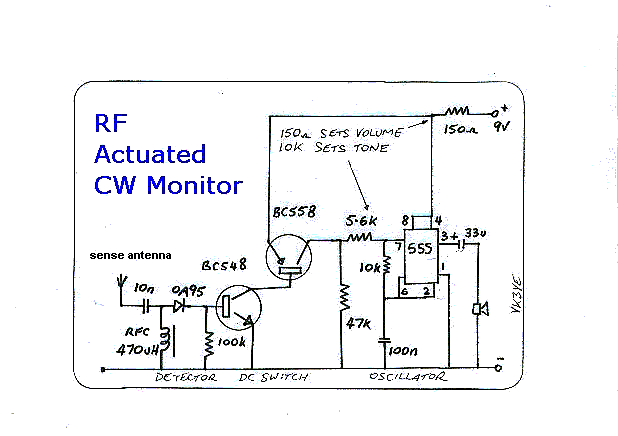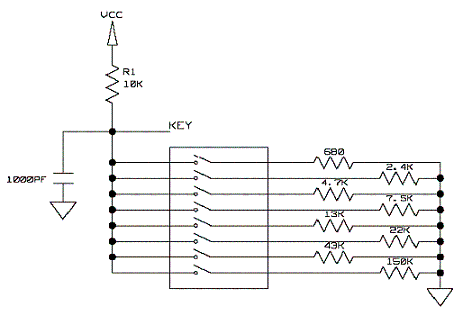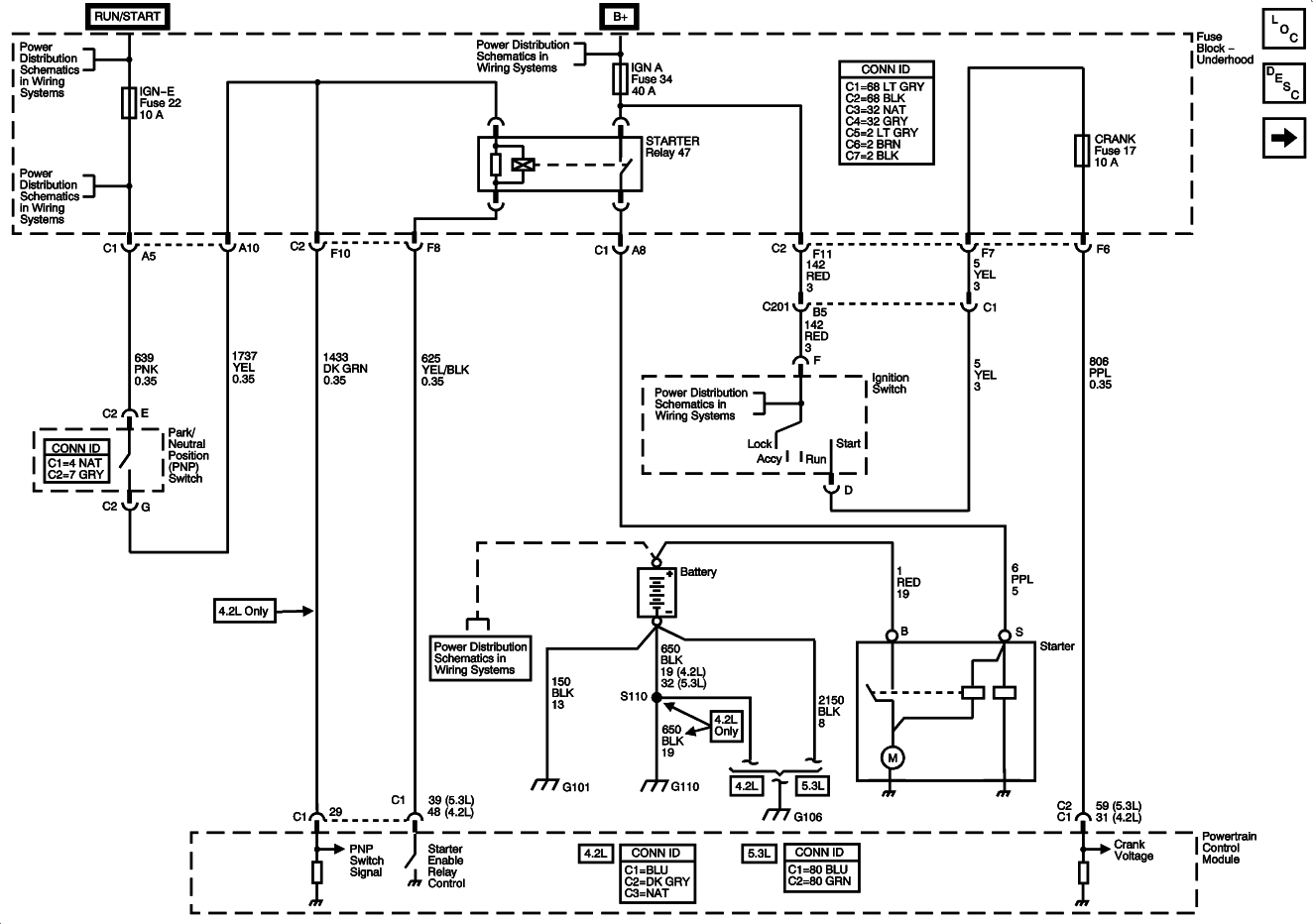
project key

This battery-powered monitor is designed to provide an audible indication of keying for transceivers that lack a CW sidetone. Its sensor wire is wrapped around the transceiver's coax, eliminating the need for a direct connection. While primarily intended for Morse code applications, this versatile circuit can also serve as a simple alarm that detects the presence of RF. The RF collected at the sensor wire is rectified by a germanium diode, generating a DC voltage that activates a transistor switch. This switch subsequently powers a 555 audio oscillator, which drives a speaker.
The circuit operates on a straightforward principle, utilizing the RF energy present in the transceiver's coaxial cable. The sensor wire acts as an antenna, capturing the RF signals generated during transmission. The germanium diode plays a crucial role in converting the alternating current (AC) RF signals into direct current (DC), allowing for the activation of downstream components.
The transistor switch is a vital component in this design, as it amplifies the rectified voltage from the diode, ensuring that the 555 audio oscillator receives sufficient power to function effectively. The 555 timer IC is configured in astable mode, producing a square wave output that drives the connected speaker. The frequency of the audio output can be adjusted by varying the resistor and capacitor values in the 555 circuit, allowing for customization of the sound produced.
This battery-powered monitor is particularly beneficial for amateur radio operators who utilize equipment without built-in sidetones. Its simple design, along with the absence of a direct connection to the transceiver, makes installation easy and non-intrusive. Furthermore, the ability to detect RF signals can be advantageous in various applications beyond Morse code, such as alerting users to the presence of RF energy in the vicinity, making it a versatile tool for electronic enthusiasts and professionals alike.This battery-powered monitor has been designed to provide an audible indication of keying for those whose rigs lack a CW sidetone. Its sensor wire is wrapped around the transceiver`s coax no direct connection is required. Of course Morse isn`t the only use for this nifty circuit it should also be useful any time you need a simple alarm tha
t detects the presence of RF. RF collected at the sensor wire is rectified by a germanium diode. This produces a DC voltage that triggers a transistor switch. This then turns on a 555 audio oscillator that drives a speaker. 🔗 External reference
The circuit operates on a straightforward principle, utilizing the RF energy present in the transceiver's coaxial cable. The sensor wire acts as an antenna, capturing the RF signals generated during transmission. The germanium diode plays a crucial role in converting the alternating current (AC) RF signals into direct current (DC), allowing for the activation of downstream components.
The transistor switch is a vital component in this design, as it amplifies the rectified voltage from the diode, ensuring that the 555 audio oscillator receives sufficient power to function effectively. The 555 timer IC is configured in astable mode, producing a square wave output that drives the connected speaker. The frequency of the audio output can be adjusted by varying the resistor and capacitor values in the 555 circuit, allowing for customization of the sound produced.
This battery-powered monitor is particularly beneficial for amateur radio operators who utilize equipment without built-in sidetones. Its simple design, along with the absence of a direct connection to the transceiver, makes installation easy and non-intrusive. Furthermore, the ability to detect RF signals can be advantageous in various applications beyond Morse code, such as alerting users to the presence of RF energy in the vicinity, making it a versatile tool for electronic enthusiasts and professionals alike.This battery-powered monitor has been designed to provide an audible indication of keying for those whose rigs lack a CW sidetone. Its sensor wire is wrapped around the transceiver`s coax no direct connection is required. Of course Morse isn`t the only use for this nifty circuit it should also be useful any time you need a simple alarm tha
t detects the presence of RF. RF collected at the sensor wire is rectified by a germanium diode. This produces a DC voltage that triggers a transistor switch. This then turns on a 555 audio oscillator that drives a speaker. 🔗 External reference





